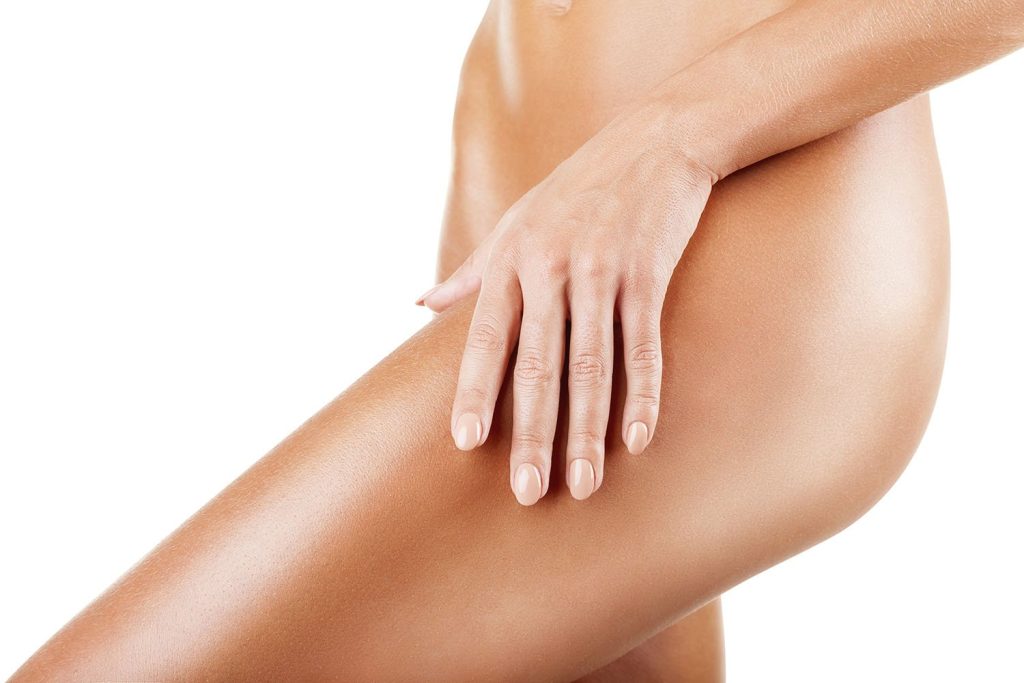In a world where fitness and wellness trends constantly evolve, body contouring techniques stand out as a revolutionary approach to sculpting the physique. Unlike traditional weight loss methods that often leave individuals grappling with stubborn fat deposits, these innovative techniques offer a targeted solution. From non-invasive options like cool sculpting to more intensive surgical procedures, there’s an array of choices tailored to meet diverse needs and preferences. This post dives into the latest in body contouring, providing insights on how each method works and whom it benefits most, guiding you towards making an informed decision for your body goals.
Understanding Body Contouring Basics
Definition
Body contouring is a series of medical procedures aimed at reshaping and refining the body’s appearance. It helps individuals achieve a more desirable body shape by removing excess skin and fat.
These techniques are not about losing weight. They focus on specific areas to enhance contours and improve proportion.
Distinction
Body contouring differs significantly from general weight loss methods. While diet and exercise reduce overall body fat, contouring targets specific problem areas.
This distinction is crucial for those looking to refine their silhouette rather than just shed pounds. It emphasizes precision in sculpting the body.
Considerations
Before considering body contouring, assessing one’s health status is essential. Candidates should be in good health and have realistic expectations about the outcomes.
Understanding that these procedures are not shortcuts to an ideal body shape but tools for enhancing natural contours is vital. They require commitment to maintain results over time.
Exploring Body Contouring Techniques
Minimally Invasive
Body sculpting procedures have evolved, offering less invasive options. These techniques target various body parts to reduce fat cells without surgery. They use cold temperatures or ultrasound energy to break down fat cells under the skin.
Patients prefer these methods for their minimal downtime and reduced risk compared to surgical options. They are ideal for those seeking subtle changes in form.
Surgical Options
For more significant transformations, surgical body contouring remains a powerful choice. Procedures like liposuction remove fat directly from the body. Tummy tucks and body lifts reshape and tighten the skin after major weight loss.
These options require longer recovery times but offer dramatic changes in appearance. They can address issues that non-invasive techniques cannot, such as removing excess skin.
Personalized Approach
Choosing the right technique depends on individual needs and goals. Factors like body type, health status, and desired results play a crucial role in this decision-making process.
Consultation with a professional helps tailor a plan that aligns with personal objectives while considering safety and effectiveness.
Technological Advancements
The field of body contouring has seen remarkable advancements over the years. New technologies have made procedures safer and more effective, broadening the spectrum of achievable outcomes.
Innovations continue to improve recovery times, reducing discomfort for patients post-procedure. This progress has made body sculpting more accessible and appealing to a wider audience.
Liposuction and Surgical Options
Liposuction Basics
Liposuction is a popular cosmetic procedure that targets stubborn fat. It involves removing fat deposits from specific areas of the body. The ideal candidates are those close to their desired weight but struggling with fat in certain spots.
This treatment can address areas like the abdomen, thighs, and arms. Surgeons use a cannula to dislodge and suction out fat, offering a more contoured appearance.
Additional Surgeries
Beyond liposuction, there are other surgical options for body contouring. Tummy tucks remove excess skin and tighten muscles in the abdominal area. Body lifts target loose skin around the torso or limbs after significant weight loss.
These procedures aim to provide a smoother, more defined silhouette. They often follow major weight loss or address changes post-pregnancy.
Choosing a Surgeon
Consulting with a certified plastic surgeon is crucial before deciding on surgery. They will evaluate your health, discuss goals, and suggest the best options for you.
Certification ensures they have extensive training in these complex procedures. This step guarantees safety and maximizes chances of satisfying results.
By understanding both liposuction and additional surgical treatments like tummy tucks or body lifts, individuals can make informed decisions about reshaping their bodies. These techniques offer solutions beyond what diet and exercise alone can achieve by targeting excess fat or skin directly. Choosing the right plastic surgeon further ensures personalized care tailored to each person’s unique needs.
Non-Invasive Contouring Methods
Cryolipolysis
Cryolipolysis stands out as a leading non-invasive body contouring technique. It employs cold temperatures to break down fat cells, which are then eliminated by the body naturally over time. This method is especially effective for targeting stubborn fat areas that resist diet and exercise.
Patients appreciate cryolipolysis for its minimal discomfort and no recovery period. Unlike invasive treatments, it allows them to return to daily activities immediately after the procedure.
Laser Treatments
Laser treatments offer another popular non-invasive option. They use controlled heat to destroy fat cells without harming surrounding tissues. This technology has evolved significantly, offering precise targeting and consistent results.
These treatments require multiple sessions but promise gradual, natural-looking fat reduction. They’re ideal for those seeking subtle improvements without the downtime associated with surgery.
Ultrasound Therapy
Ultrasound therapy uses sound waves to target and eliminate fat cells in specific areas of the body. This method is non-invasive and does not require any incisions or anesthesia, making it a safe alternative for individuals looking for a less aggressive approach to body contouring.
The process is painless and typically involves a series of treatment sessions for optimal results. Patients can resume their normal activities immediately following each session, highlighting its convenience for busy lifestyles.
Before, During, and After Procedures
Preparation Steps
Consultations and physical evaluations are crucial before any body contouring procedure. Experts will assess your health and discuss desired outcomes. They ensure you understand the process, including potential risks and benefits.
Physical readiness is key. Some procedures might require adjustments in diet or lifestyle to minimize complications. It’s essential to have realistic expectations from these consultations.
Procedure Expectations
During a body contouring procedure, experiences vary based on whether it’s surgical or non-invasive. Surgical methods involve anesthesia and may lead to more significant downtime. Non-invasive techniques often boast minimal downtime, allowing quicker return to daily activities.
For non-invasive treatments mentioned earlier, expect sessions to last minutes to an hour for certain areas. These methods typically use temperatures to target fat cells without damaging the skin or surrounding tissues.
Post-Procedure Care
Aftercare is vital for optimal results. Following experts’ instructions can reduce recovery time and enhance outcomes. Patience is also critical; visible changes may take time as the body adjusts and heals.
Regular follow-ups with your healthcare provider ensure proper healing and allow timely management of any concerns that arise post-procedure.
Potential Side Effects and Risks
Common Side Effects
Body contouring procedures often lead to temporary discomfort. Patients commonly experience swelling, bruising, and soreness in treated areas. These side effects are usually mild and resolve within a few weeks.
Discomfort can vary based on the procedure’s extent and the individual’s pain tolerance. It is crucial to follow post-procedure care instructions to minimize these effects.
Serious Complications
While rare, more severe complications can occur. They underscore the importance of selecting experienced professionals for any body contouring procedure.
Risks include infection, significant scarring, and adverse reactions to anesthesia. Heat-based treatments may also cause burns or changes in skin sensation. Adhering strictly to post-procedure guidelines significantly reduces these risks.
Risk Mitigation
Discussing your medical history and current medications during the consultation phase is vital. This disclosure helps mitigate potential risks associated with body contouring techniques.
Professionals can tailor treatment plans to accommodate health conditions or medication interactions, ensuring safety throughout the process.

Recovery and Post-Treatment Care
Recovery Times
Recovery times after body contouring treatments can vary significantly. It largely depends on the type of treatment received—whether it involves heat treatments, cold treatments, or other non-invasive methods. Generally, patients might return to their daily activities immediately following less invasive procedures. However, more intensive treatments may require a few weeks for full recovery.
Patients should always follow their healthcare provider’s guidance closely. This ensures they understand the expected timeline for healing and when it’s safe to resume normal activities.
Post-Treatment Care
Post-treatment care is crucial for achieving the best results from body contouring procedures. Wearing compression garments is often recommended to help reduce swelling and support the treated areas during healing. Avoiding strenuous activities for a specified period is essential to prevent complications and ensure optimal recovery.
Maintaining a stable weight and adopting a healthy lifestyle are also vital steps in preserving the outcomes of body contouring. Fluctuations in weight can alter results, making it important for patients to stick to a balanced diet and regular exercise regimen post-treatment.
Consultation Importance
Before undergoing any body contouring procedure, consulting with a qualified professional is critical. They can provide personalized advice on recovery times and post-treatment care based on individual health profiles and treatment plans. The consultation also offers an opportunity to discuss how previous conditions mentioned in “Potential Side Effects and Risks” could affect recovery processes.
Achieving Desired Outcomes
Realistic Expectations
It’s crucial to approach body contouring with realistic expectations. This technique refines and enhances your physique, aiming for improvement rather than perfection. Understanding this can significantly impact your satisfaction with the results.
Body contouring works best on targeted areas that don’t respond to exercise and maintaining a healthy weight. It’s not a weight-loss solution but a way to achieve aesthetic goals in specific parts of the body.
Ongoing Communication
Continuous dialogue with your healthcare provider is key. They can help monitor progress and address any concerns that arise during the journey. This open line of communication ensures you’re always informed about what to expect next.
If questions or issues come up, don’t hesitate to reach out for guidance. Your provider is there to support you every step of the way.
Multiple Sessions
Often, achieving the best possible outcome requires multiple sessions or combination treatments. Each body reacts differently, and some areas may need more attention than others.
Patients should be prepared for this possibility from the start. Knowing that additional treatments might be necessary helps set appropriate expectations and plan accordingly.
Summary
Body contouring offers a dynamic range of techniques tailored to meet your unique needs, from liposuction to non-invasive methods. You’ve explored the essentials, delved into various procedures, understood potential risks, and learned about recovery to achieve your desired outcomes. Remember, each journey is personal; what works for one may not suit another. Trust in the process and consult with professionals to chart the best course for your body goals.
Now’s the time to take action. Reflect on what you’ve learned, weigh your options, and reach out to a certified specialist who can guide you through making an informed decision. Your path to a more confident self starts with that first step. Don’t wait—embrace the opportunity to transform and feel your best.
Frequently Asked Questions
What is body contouring?
Body contouring refers to various procedures that reshape an area of the body, including surgical options like liposuction and non-invasive methods.
How does liposuction work?
Liposuction removes fat from specific areas through a small incision, using a vacuum-like device to shape the body.
Are there non-invasive body contouring methods?
Yes, there are several non-invasive options such as cryolipolysis (cool sculpting) and laser treatments that reduce fat without surgery.
What should I expect during a body contouring procedure?
Expectations vary by procedure type; however, most involve either a surgical approach under anesthesia or a less invasive method with minimal discomfort.
What are common side effects of body contouring?
Common side effects include swelling, bruising, and discomfort around the treated areas. These typically diminish over time.
How long is recovery after a body contouring treatment?
Recovery times vary widely from immediate return to daily activities for non-invasive treatments to several weeks for surgical options like liposuction.
Can body contouring guarantee desired outcomes?
While outcomes can significantly improve one’s appearance and confidence, results vary based on individual factors like skin elasticity and overall health.





